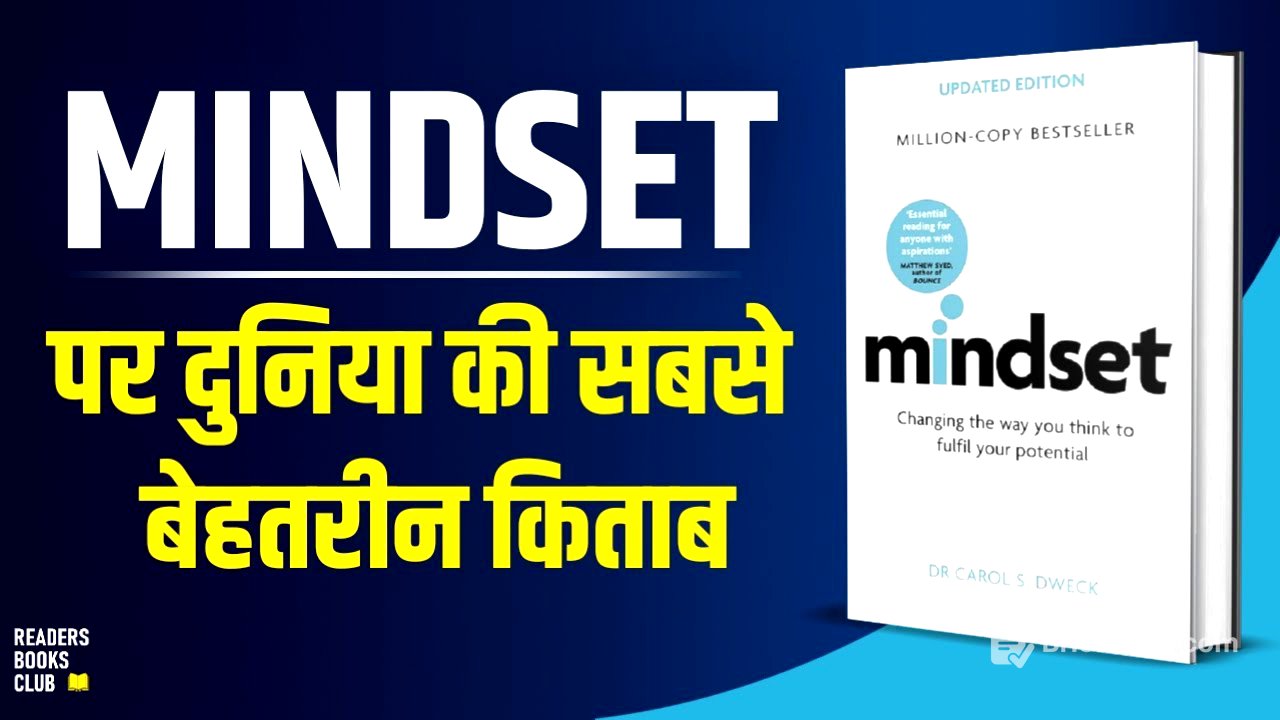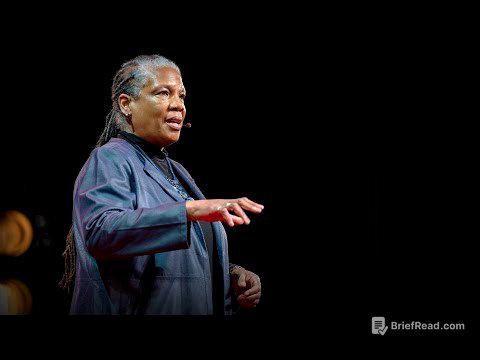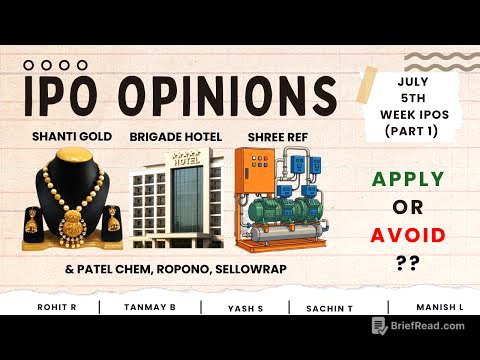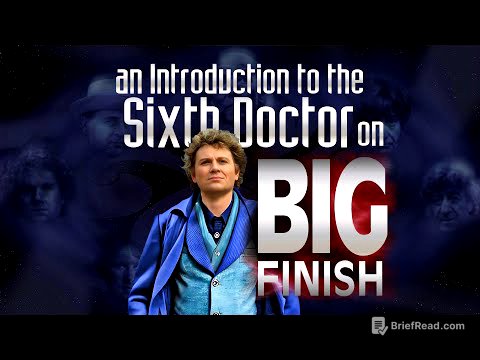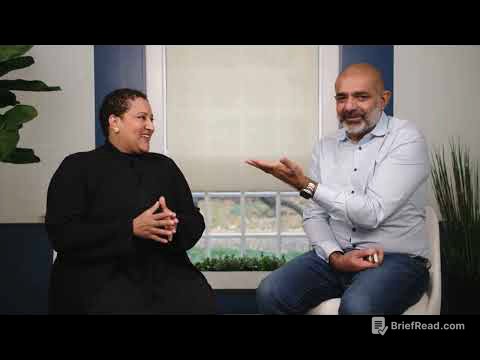TLDR;
This video summarizes Carol Dweck's book "Mindset," explaining the difference between fixed and growth mindsets and how they impact various aspects of life, including learning, relationships, sports, and business. It emphasizes that a growth mindset, which embraces challenges and views failures as opportunities for learning, is crucial for achieving success and personal fulfillment. The video also explores how praise and labels can influence mindset development and provides guidance on fostering a growth mindset in oneself and others.
- Fixed mindset vs. growth mindset
- Impact of mindset on success and personal fulfillment
- The role of praise and labels in shaping mindsets
- Practical steps to cultivate a growth mindset
Introduction to Mindset [0:00]
The video introduces Carol Dweck's book "Mindset," which explores how our beliefs shape our lives and how adopting a growth mindset can lead to greater achievement and fulfillment. The book highlights that successful individuals in various fields didn't achieve greatness overnight, but rather through developing a growth mindset that embraces learning and challenges. The video promises to explain how mindset influences the direction of our lives and how to cultivate a positive one.
Chapter 1 - Mindset [1:35]
This chapter discusses the author's early research on how people handle failure. She observed that some students, when faced with challenging puzzles, embraced the difficulty as a learning opportunity, which surprised and inspired her. This led her to investigate why people differ in their responses to challenges, questioning whether intelligence is fixed or can be developed. The chapter introduces the concept of fixed and growth mindsets, explaining that a fixed mindset creates an urgency to prove oneself, while a growth mindset believes in the power of effort, strategies, and learning from experiences to achieve anything.
Chapter 2 - Inside the Mindsets [5:20]
The author shares personal experiences and observations to illustrate the difference between fixed and growth mindsets. She discusses how her own mindset evolved over time and how she noticed that some students focused on proving their ability, while others focused on improving it. The chapter explores how mindset affects priorities, with fixed mindset individuals seeking comfort and validation, while growth mindset individuals seek challenges and opportunities for growth. It also addresses the common misconception that effort is only for those who lack talent, arguing that even geniuses need to work hard to achieve success.
Chapter 3 - The Truth About Ability and Accomplishment [10:45]
This chapter challenges the myth of the lone genius, using Thomas Edison as an example to illustrate that great achievements often involve collaboration and teamwork. It examines the impact of mindset on school achievement, noting that students with a fixed mindset tend to experience a decline in grades during challenging times, while those with a growth mindset continue to learn and improve. The chapter also explores the belief that artistic ability is a gift, arguing that anyone can improve their skills through learning and practice. Additionally, it discusses the dangers of praise and positive labels, explaining how they can lead to a fixed mindset and a fear of failure.
Chapter 4 - Sports: The Mindset of a Champion [16:47]
The chapter explores the role of mindset in sports, contrasting the careers of baseball players Billy Beane and Lenny to illustrate the impact of fixed and growth mindsets. It challenges the idea of natural talent, highlighting examples of athletes who overcame physical limitations through commitment and a growth mindset. The chapter emphasizes that for people with growth mindsets, success means doing their best, learning, and improving, and that they view setbacks as motivation and opportunities for growth. It concludes by stressing the importance of taking responsibility for one's success and maintaining it through continuous improvement.
Chapter 5 - Business, Mindset and Leadership Enron and the Talent Mindset [20:37]
This chapter examines the role of mindset in business and leadership, using the example of Enron to illustrate the dangers of a "talent mindset" that prioritizes innate ability over learning and growth. It contrasts fixed mindset leaders like Lee Lacocca, who focused on proving themselves, with growth mindset leaders like Jack Welch, who prioritized employee development and continuous improvement. The chapter emphasizes that fixed mindsets can ruin companies, while growth mindsets can lead to innovation and success.
Chapter 6 - Mindsets in Love (or Not) [27:45]
The chapter explores how mindsets affect relationships, noting that fixed mindset individuals tend to feel judged and rejected after a bad experience, while growth mindset individuals focus on understanding, forgiving, and moving on. It discusses how fixed mindset individuals believe that relationships should be perfectly aligned from the start, while growth mindset individuals believe that qualities and character can be developed in oneself, one's partner, and the relationship. The chapter also examines how fixed mindsets can lead to competition and blame in relationships, while growth mindsets foster development and growth.
Chapter 7 - Parents, Teachers, and Coaches: Where Do Mindsets Come From? [27:42]
This chapter examines the role of parents, teachers, and coaches in shaping mindsets. It notes that well-intentioned messages about talent and intelligence can inadvertently push children toward a fixed mindset, while constructive criticism and a focus on effort and learning can foster a growth mindset. The chapter also discusses the importance of reassuring children without focusing on their talent and of providing constructive criticism that helps them solve problems and become better people. It concludes by emphasizing that great teachers and parents believe in growth and instill the same mindset in their students and children.
Chapter 8 - Changing Mindsets: A Workshop [30:35]
This chapter provides guidance on changing mindsets, emphasizing the importance of asking for help and developing a growth mindset that overlaps one's fixed mindset. It explains that fixed mindsets create standards based on judging, while growth mindsets focus on learning and improvement. The chapter also addresses the issue of entitlement, noting that people with fixed mindsets may believe they deserve better without putting in the effort. It concludes by emphasizing that adopting a growth mindset involves working hard, being helpful to others, and believing that commitment and effort can turn situations favorable.
